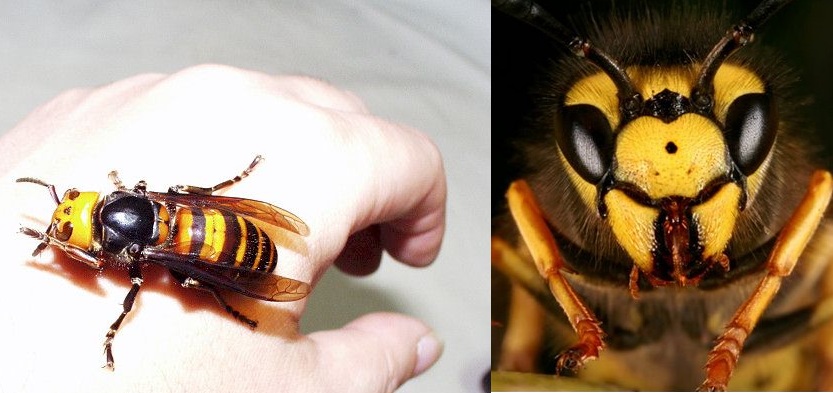|
A small but highly efficient killing machine—a hornet two inches long and with a wingspan up to three inches—lurks in the mountains of Japan. The voracious predator has a quarter-inch stinger that pumps out a dose of venom with an enzyme so strong it can dissolve human tissue.
Bees, other hornet species, and larger insects such as praying mantises are no match for the giant hornets, which often stalk their prey in relentless armies. Just one of these hornets can kill 40 European honeybees a minute; a handful of the creatures can slaughter 30,000 European honeybees within hours, leaving a trail of severed insect heads and limbs. People are not the Japanese giant hornet's usual prey, but those who have felt its sting describe the pain as excruciating. Masato Ono, an entomologist at Tamagawa University, near Tokyo, said it's "like a hot nail through my leg." Someone who is stung by the hornet and doesn't receive proper treatment soon thereafter can die from the venom, which is powerful enough to disintegrate human flesh. About 40 people die each year after being stung by giant hornets, mainly as a result of an allergic reaction to the venom. Source: National Gepgraphic
1 Comment
|
Blog Archive
|

 RSS Feed
RSS Feed
